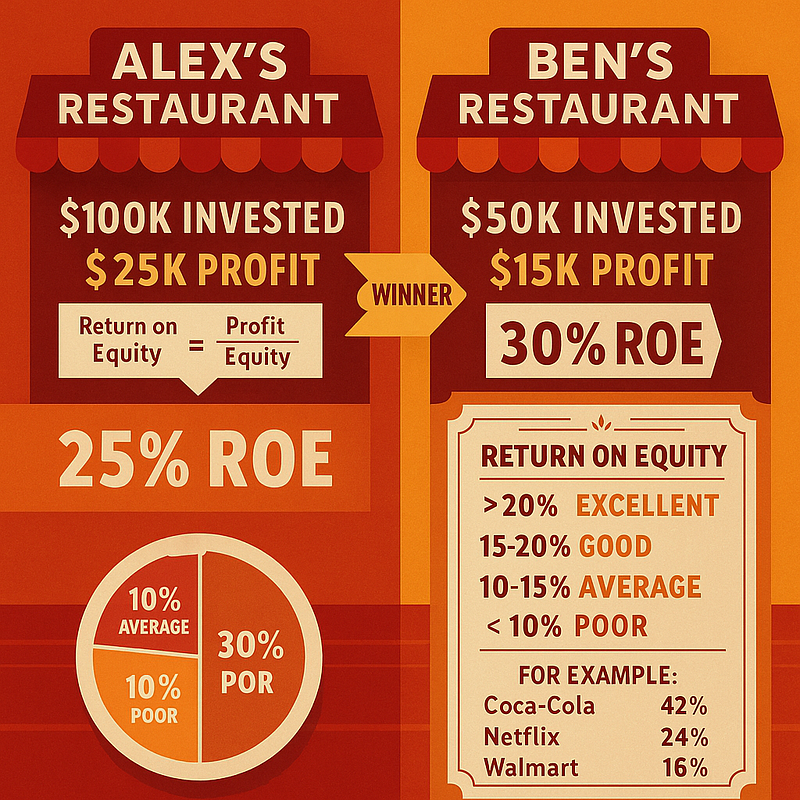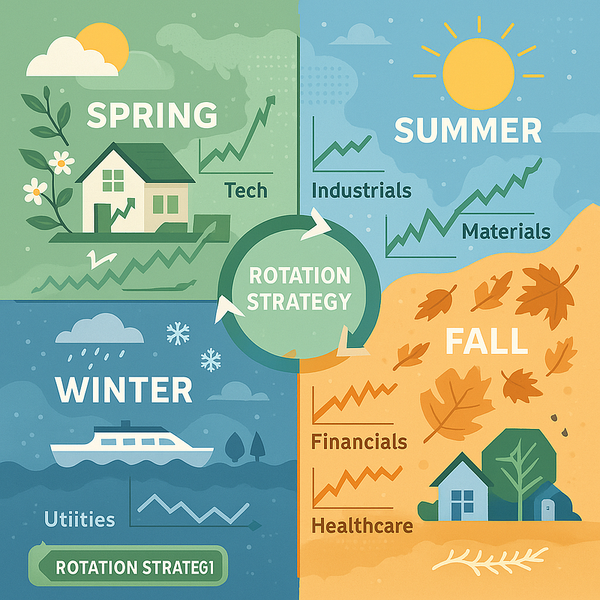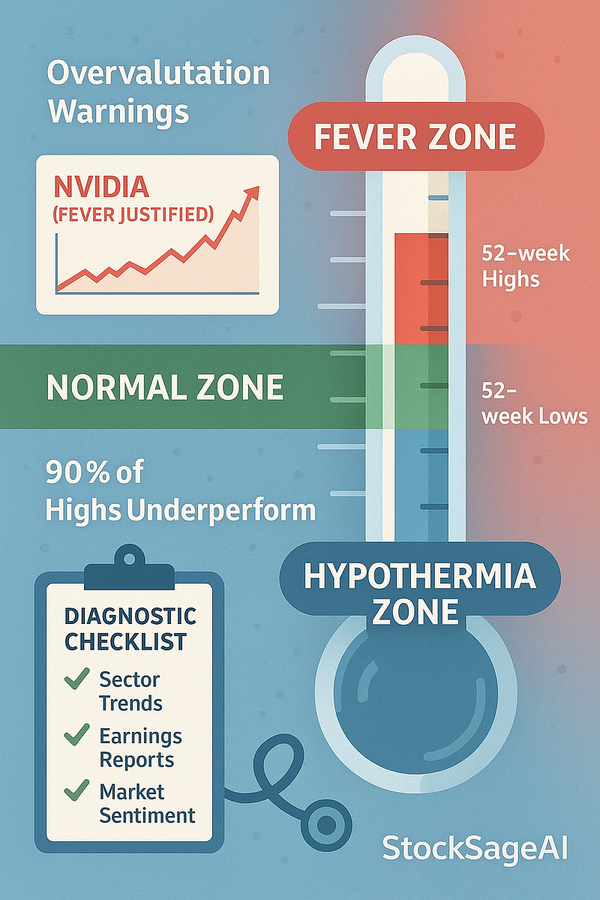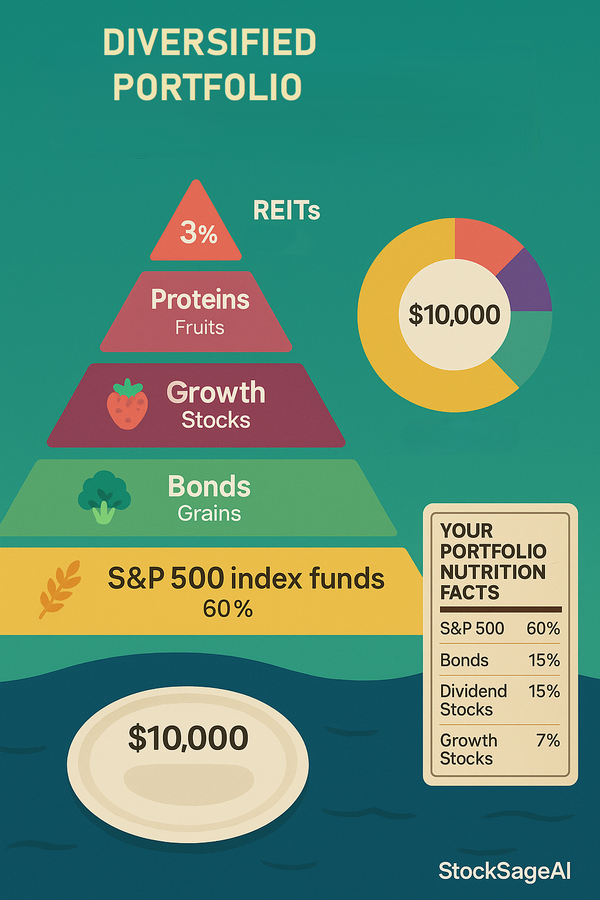The Restaurant Owner’s Secret to Measuring Profitability (ROE Explained)
Two restaurant owners each invested $100,000. One made $25,000 profit, the other made $15,000. Plot twist: The second owner is actually the…

Two restaurant owners each invested $100,000. One made $25,000 profit, the other made $15,000. Plot twist: The second owner is actually the better businessman.
The Story: Meet Alex and Ben, both restaurant owners:
Alex’s Restaurant:
- Personal investment: $100,000
- Annual profit: $25,000
- Return on his investment: 25%
Ben’s Restaurant:
- Personal investment: $50,000
- Annual profit: $15,000
- Return on his investment: 30%
Who’s the better operator? Ben! He generated more profit per dollar of his own money invested.
The Stock Market Connection: This is Return on Equity (ROE) — how efficiently a company uses shareholders’ money to generate profits.
Formula: ROE = Net Income ÷ Shareholders’ Equity
Real Examples:
- Apple: $99.8B profit ÷ $62.1B equity = 161% ROE (exceptional!)
- Coca-Cola: $10.7B profit ÷ $24.2B equity = 44% ROE (excellent)
- Ford: $3.7B profit ÷ $44.8B equity = 8% ROE (needs improvement)
The ROE Quality Scale:
- Above 20%: Exceptional (like Ben’s restaurant)
- 15–20%: Good performance
- 10–15%: Average
- Below 10%: Poor capital efficiency
The Hidden Danger: Super high ROE (above 50%) might indicate excessive debt. It’s like a restaurant owner borrowing heavily to inflate profits — risky business.
Action Step: Check the ROE of your current stocks. Are you invested in efficient “restaurant owners” or capital-wasting managers?
Think About This: Would you rather own a restaurant generating 30% returns or invest in a savings account at 5%? ROE helps you find the 30% businesses.



